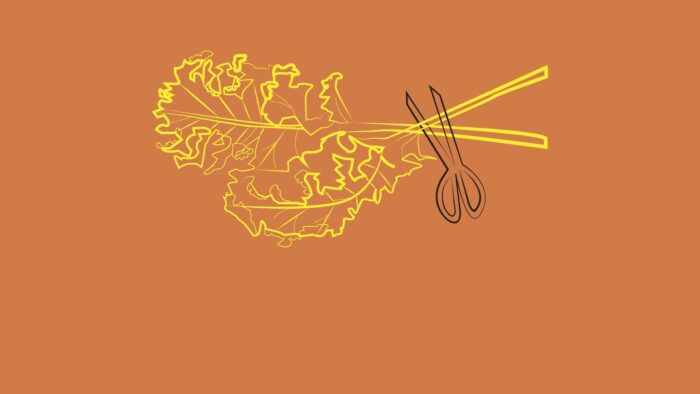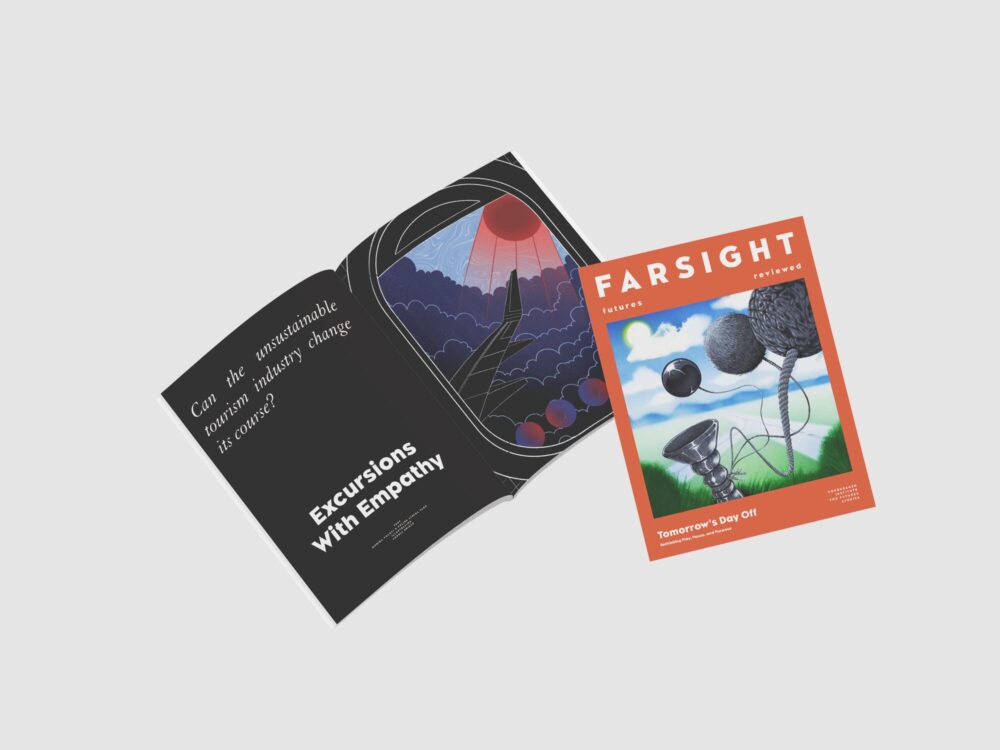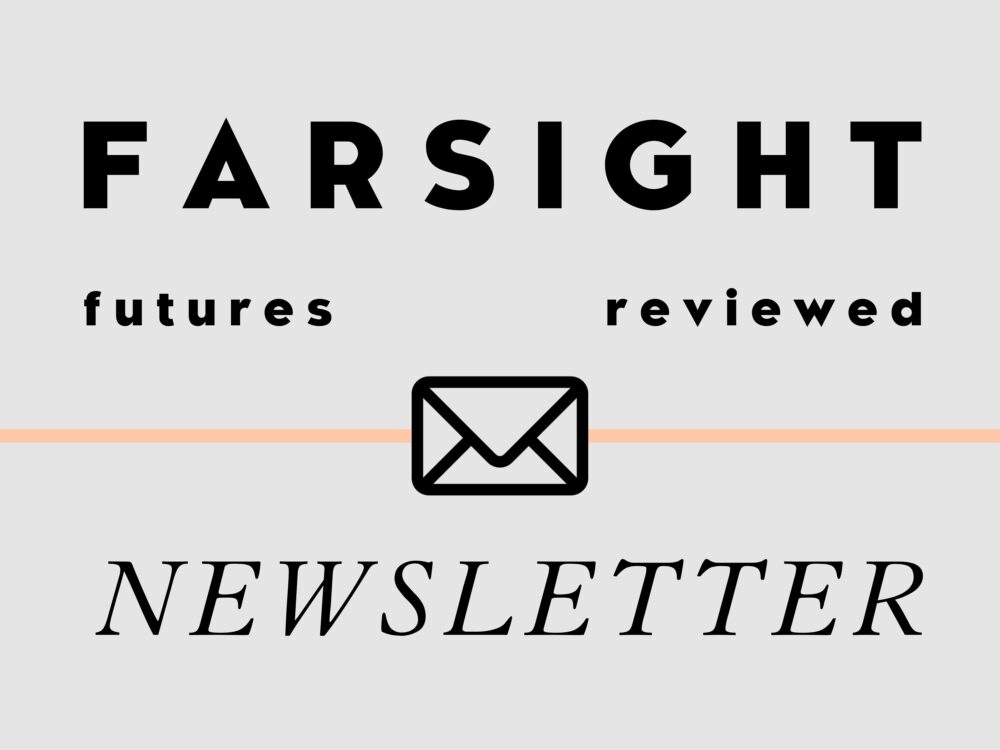
In turn, we use cookies to measure and obtain statistical data about the navigation of the users. You can configure and accept the use of the cookies, and modify your consent options, at any time.

To Boozy Futures
A civilisational defence of the intoxicant amid cultural retrograde – alcohol.
Images: Midjourney AI
For many, leisure is demarcated by ingesting a molecular composition of two carbon, six hydrogen, and one oxygen atoms. Ethanol is absorbed by the digestive system, drawn into one’s veins, and thereafter buzzes through one’s vascular system until, at last, the brain is reached. An unmistakable warmth rises within your chest as ruminations over the future elapse and enthusiasm towards the present expands. At last, the prefrontal cortex (PFC), that tiresome seat of rationality, has been tamed.
This ritual of hedonistic bliss is one which humanity has been embarking upon for thousands of years, with the earliest evidence of alcohol consumption dating back to 7000 BCE in the Yellow Valley of Neolithic China, where archaeologists have found chemical traces of (a kind of) wine. The presence of alcohol in the ancient sacrifices, feasts, and ceremonies of several civilisations – from ancient Egypt to Greece, Dionysus to Bacchus – paints a particularly drunken picture of history when compared to the relative insignificance of cannabis or other psychoactive intoxicants, for example.

Broaden your horizons with a Futures Membership. Stay updated on key trends and developments through receiving quarterly issues of FARSIGHT, live Futures Seminars with futurists, training, and discounts on our courses.
become a futures memberIt is a particularly strange phenomenon for futurists, whose values of long-term thinking and (supposed) self-control clash with alcohol’s direct downregulation of our prefrontal cortex. Located at the front of our brain, the PFC is responsible for what are known as executive functions: decision-making, strategising, and delaying gratification.
As Professor Edward Slingerland, author of the book Drunk: How we Drank, Stumbled, and Danced our way to Civilization, remarks: “Given that that the PFC is key to our success as a species, consuming any amount of alcohol or intoxicant really seems quite stupid.” So why do we continue to do so – and might we be living through an attitudinal shift towards alcohol today?
Slingerland joins me on a Zoom call from Vancouver, Canada, where he is currently a Professor of Philosophy at the University of British Columbia. His book primarily concerns itself with arguing that alcohol has become such a “powerful technology” for humans by “helping us inhabit our odd, extreme ecological niche.” In other words, we wouldn’t have civilisation as we know it without intoxication in some form.
This narrow ecological niche requires us to behave in ways that significantly differ from other mammals, and often, the behaviours required for our survival depend on us creating technology to help us along the way. For Slingerland, these requirements can be boiled down to what he calls the “Three Cs”: that we have had to be creative, cultural, and communal to achieve apex status in the animal kingdom. Alcohol, in its downregulation of the PFC, has been instrumental in aiding human civilisation achieve these three requirements and will continue to be so, according to Slingerland.
Consider alcohol’s historical and current role in strengthening rituals of social bonding. Civilisational development requires large-scale cooperation to function, yet as humans, we remain nonetheless primates – the descendants of “selfish, backstabbing apes.” Today, we sit upon over 200,000 years of culture and upbringing that have been meticulously refined to generate trust among our fellow Homo Sapiens. But even if human cooperation has arguably never been at a greater level amid globalisation, plenty of cases remain that demand the creation of trust from other, sometimes more inebriated means.

Historically, alcohol has played a pivotal role in doing so, argues Slingerland, specifically through its ability to unveil the subconscious, emotional signals of potential partners. “The threat presented by the hypocrite, the false friend, is an existential one for any community,” he writes, and hence, intoxicants (with alcohol being by far the most common) have played a crucial role in “helping unmask fakers and thereby solidify interpersonal trust.” Whether through the drunken fraternising of neighbouring rival tribes, political agreements being accompanied by the ceremonial ingestion of a liquid neurotoxin, or the deal-making business dinner where a potential client passive-aggressively insists on buying you a scotch on the rocks, in such key moments, communality is forged when our self-control and rationality slip into that of emotional impulses.
Humanity’s need to be creative to ensure its survival has arguably also been boosted by booze. One way of understanding how our brains mature is a process of trading flexibility for efficiency. The unadulterated mind of a child, for example, is geared towards grabbing and synthesising as much new information as possible, from wherever the source. Their lack of pre-established ‘neural highways’ between different pieces of information makes children incredibly creative – albeit, in a terribly randomised and unstructured way. As we accumulate more knowledge, however, our brains optimise for neural efficiency by using these now-established ‘neural highways’, leading to a more rational and efficient brain, but also a less creative one.
As Slingerland writes, “to maximize the implementable cultural innovation, your ideal person would be someone with the body of an adult but, for a brief period, the mind of a child.” Several studies show that when our PFC is temporarily downregulated, our level of ‘lateral-thinking’, or creativity, is increased – and vice-versa as well. For example, an fMRI study of jazz pianists showed that when subjects were asked to switch from playing scales to improvising, neural activity in their PFC significantly decreased. Sometimes the PFC can be so overriding however, that engaging in a creative activity cannot downregulate the PFC on its own. In such instances, alcohol is a potent tool in achieving the temporary balance of a mind that’s creative like a child’s, yet with the knowledge of an adult.
The elephant in the room, of course, is that this piece of liquified technology also wreaks absolute havoc on the civilisation it supposedly pushes forwards. Alcohol causes 5.3% of all deaths in the world every year – circa. 3 million. About 25% of all road fatalities in the EU can be attributed to alcohol. The OECD suggests that the impact of alcohol consumption on the wider economy – that is, beyond healthcare expenditure – ranges between 0.4% to 1.6% of GDP (Portugal & France versus Estonia, respectively). From our livers to our relationships, alcohol can destroy ourselves and those we love most.

Small wonder, then, that alcohol seems to be amid a cultural backsliding among today’s drinkers. For although many countries have their own recommendations for a supposedly ‘safe’ alcohol intake, the World Health Organisation completely rejects this line of thinking. As of January 2023, the WHO’s universal guidelines on alcohol consumption state that “there is no safe amount that does not affect health.” Trend forecasters and savvy journalists are also likely to point out that younger generations drink less compared to older generations, and increasingly, are even choosing abstinence entirely. A study from the Berenberg Institute in 2018 found that Gen Z respondents drank 20% less alcohol per capita than Millennials did when they were the same age, and 64% of Gen Z responded that they expected to drink less frequently when they grew older. Studies from the United States, United Kingdom, and European Union show that youth from ages 16-27 are the most likely to teetotal and abstain from alcohol altogether. The studies generally attribute these tendencies towards a higher degree of mindfulness among Gen Z, health-consciousness, and school/work-related stress, as well as spending a higher proportion of their social interactions online.
Yet, upon asking Professor Slingerland how he thinks alcohol’s societal role will have evolved in the next twenty years’ time, and whether other drugs, such as cannabis or psychedelics will take greater hold, I am met with a resounding scepticism:
“I pretty much see alcohol as having the same role in twenty years’ time as it has today,” he says. “There’s a good reason why alcohol has been king of the intoxicants. Sure, there are other intoxicants that we have used historically – cannabis has been around for nearly 6000 years. But cannabis lost to alcohol a long time ago. Cannabis has some great advantages: it’s not physically addictive, and physiologically, it’s less harmful than alcohol. But it’s got two fatal flaws: it has quite variable effects across individuals, and it is also hard to dose. If you’re doing edibles, which is how most cultures have consumed cannabis, the delay between when you take it and when the effects happen is so long that it’s notoriously easy to overdose or underdose. And so, it’s just not useful as a social drug.”
Those who followed the wave of cannabis legalisation initiatives in the early 2010s (starting with the states of Colorado and Washington in 2012) will likely remember idealised visions of cannabis-imbued long-table cafés replacing boozy bars, where groups of strangers would exchange their creative visions amidst a haze of skunk and the sound of alighting reefers. Yet in the cities of Vancouver, Denver, and Seattle, all places where recreational cannabis use is now legal, people continue to enter the social domain of leisure with a pint – even if it results in a crippling hangover the next day.
“The beauty of alcohol is that it’s very easy to dose and its effects hit right away. These effects are predictable across individuals: we have a dedicated machinery simply waiting for ethanol to come in which immediately grabs it and starts breaking it down. So, the half-life is relatively short. And that’s an immense benefit, because it means you can have a drink or two at work, and by the time you’re home, it’s like it’s gone. There’s just no other drug that works quite that way,” Slingerland tells me.

Explore the world of tomorrow with handpicked articles by signing up to our monthly newsletter.
sign up hereWhat about psychedelics? In contrast to cannabis, Slingerland hesitantly entertains a future where the appropriate synthesis of psilocybin and its subsequent ingestion via micro-dosing becomes more prevalent.
“Traditionally, the problem with psychedelics has been that, as a social drug, they’re just too powerful and completely disconnect you from reality for a long time. There’s no culture in the world where people get together after working in the fields and do some psilocybin to relax. However, now that we can synthesise it and dose it in a different way, it’s possible that it could give you some of the benefits of alcohol by downregulating your PFC and boosting feel-good hormones. But the thing is, we’ve been experimenting with small doses of psilocybin for only five, maybe six years. We’ve been producing and consuming alcohol for at least 13,000 – we just have so much more experience with booze.”
The desire to extrapolate micro-trends to genuine overarching shifts in consumer attitudes is a common fallacy among futurists. Considering how efficient and universally effective alcohol is at turning our PFC off, allowing us to tap into our ecological niche, sensationalist headlines such as, “How We Fell Out of Love with Alcohol” and “How Alcohol Lost its Cool” should perhaps be taken with a grain of salt.
Alcohol has an immense cultural staying power, both by virtue of how effective it is at furthering our ecological niche and simply how long human civilisation has had it by its side. However, although Slingerland’s book is primarily concerned with defending alcohol’s civilisational role, he also wishes for the culture surrounding it to change. “[In the book], I tried to make a defence of hedonism for hedonism’s sake. And that’s swimming against what I feel is the trend right now,” he tells me.

“We’re not our genes, right? We go against our genetic interests all the time because things are pleasurable. So, an obvious argument for why we might want to have a place for alcohol in society is because it tastes good. It makes us feel good. It enhances food. It makes social gatherings more fun and helps us relax at the end of the day. On top of all the ‘functional’ benefits, we have to recognise that from a hedonic standpoint, alcohol brings pleasure to people.”
I question whether it’s possible to affirm hedonism for hedonism’s sake considering the immense scope of harm alcohol can have on ourselves and others around us. If Slingerland holds the controversial opinion that alcohol is not only here to stay, but that it should stay, does it not rest on the premise that our current culture surrounding it ought to change too, transforming into one that minimises the risks of consumption in the future?
Slingerland believes so, and he points to two developments in modern history that have thrown our relationship to alcohol completely adrift: distillation and isolation. In the chronicle of human alcohol consumption, the distillation of purified liquors has not existed for very long, initially appearing in China in the thirteenth century and in Europe in the sixteenth century. When viewed in relation to the 9,000-year timeline of human alcohol consumption, the recent advent of distilled liquors represents a “quantum leap” in alcoholic content. In fact, most beers and wines would have historically ranged from 2 to 4% ABV, with the furthest humans have been able to push the natural process of fermentation being the Australian Shiraz, a type of “sugar-rich, super-ripe grape” which can be bumped up to around 16 percent.
“It’s the safety feature of natural fermentation completely disabled, turning the drink into something way more powerful than we are physiologically equipped to deal with,” Slingerland tells me.
The second development that has set our relationship to alcohol adrift is the rise of solitary drinking, primarily caused by the removal of alcohol from the (often) very strict, ritualistic, and inherently social boundaries it has traditionally been set in. Consider, for example, the relatively high rates of alcohol abuse among communities (such as Native Americans or the Inuit peoples of Greenland and Canada) that prior to colonial settlement had little to no tradition of alcohol use – let alone distilled liquors.
Promoting what Slingerland calls ‘southern’ drinking cultures over ‘northern’ ones would go a long way towards ensuring that the future of alcohol’s inevitable consumption follows the right path. “In northern cultures, you’re primarily drinking distilled liquors in single-sex groups to get drunk – visibly drunk. It’s denied to children as a kind of ‘taboo’ and is also typically done in the absence of a meal – you’re just drinking to drink. All those things together magnify any propensity to alcoholism that you might have in a population.” On the other hand, ‘southern’ drinking cultures (like those found in the Mediterranean) tend to stick to beer and wine, drink exclusively in mixed-sex social gatherings (where food is more often than not accompanied), and interestingly, do not have a taboo surrounding alcohol either – at least up until the point of explicit and visible drunkenness, which is considered outright shameful.

Returning to affirming alcohol for hedonism’s sake, perhaps one of actual drivers of its misuse is that it is becoming taboo. Whereas drinking is completely normalised in southern cultures, enjoyed for the merry and warm communality it brings, it is always sufficiently packaged in enough societal codes of conduct to prevent consumption from getting out of control. Contrast this with governments who take their advice from, say, the WHO, whose position is that there is no acceptable level of alcohol consumption.
“It is a kind of neo-puritanism which is present even in somewhat left-wing or New Age-y circles. There exists a strange kind of Calvinism lurking in the background, where anything that isn’t making you healthier isn’t okay,” Slingerland remarks. “When they’re issuing recommendations, they’re thinking purely in terms of risk mitigation and functionality. But it’s kind of a weird perspective, where the goal is to maximise your lifespan at all costs. We don’t really live like that. If I were trying to maximise my lifespan, I shouldn’t engage in certain sports. I shouldn’t drive a car. I think our public health organisations are very much in the mindset that causes them to issue incorrect or simply impractical guidelines to people.”
As the German philosopher Nietzsche once argued, humanity has not, is not, and will never be exclusively defined by the faculties associated with the intellect, such as rationality and abstraction (represented by the ancient Greek God Apollo). Instead, a key to human flourishing, (or in Greek, eudaimonia), is also the inclusion of Dionysus, the God of wine, festivity – and, admittedly, chaos. To wish for a purely ‘Apollonian’ future, free from the frantic ravages of wine-imbued ecstasy, is to wish for a future perhaps not even human.
“Alcohol has always been controlled by cultures that use it. Every culture that uses alcohol is a little bit worried about it. Every culture that produces alcohol has at some point talked about prohibition. Every culture has recognised that it’s a double-edged tool,” Slingerland stresses. In contrast to the wishes of some futurists, it does not seem that posterity can be modelled purely on the strategic faculties of our prefrontal cortex. A decidedly human future seems to be one that also involves us igniting our childlike disinhibition to engage in creative, intoxicated frenzy – with a healthy level of suspicion, of course.

Read the latest issue of
FARSIGHT:
Tomorrow’s Day Off
Grab a copy here